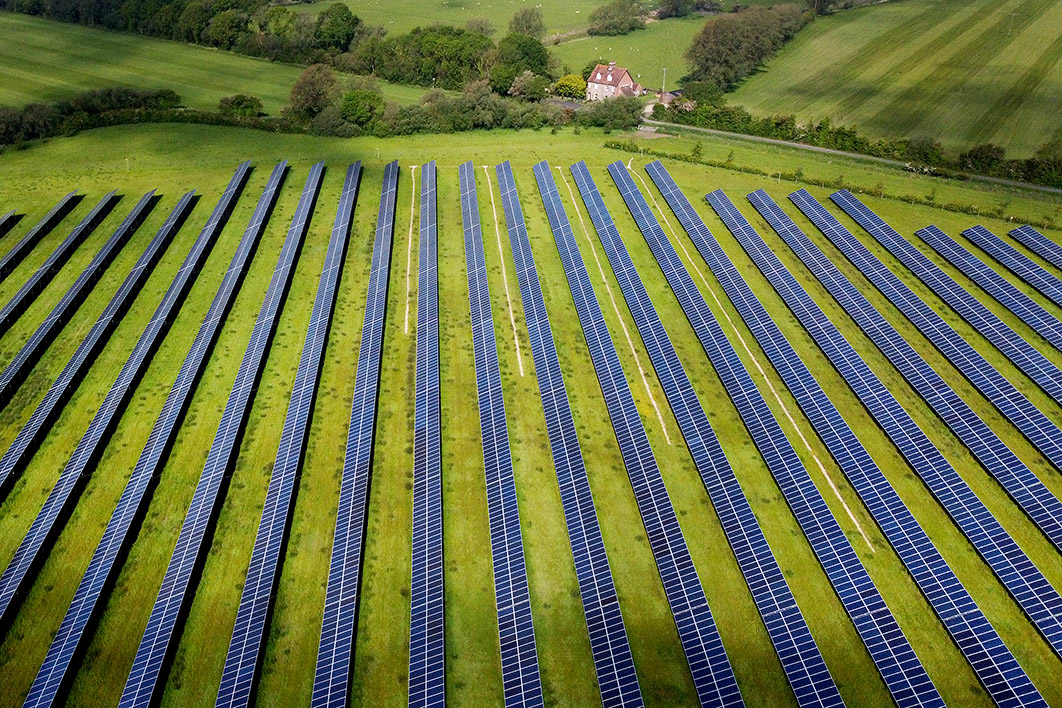Covid-19 has put the size of the climate challenge into perspective. As businesses closed, factories shut, planes were grounded and cars gathered dust in garages, global carbon emissions fell by 7 per cent: about the same fall we need to achieve each year for ten years if we are to avoid a 1.5°C increase in global temperatures, according to analysis by Andrew Charlton. Given it took a global economic shutdown to achieve this in 2020, are we up to the task?
Combating climate change will require one thing in particular, and a lot of it: investment. The Economist estimates that the annual production of electric vehicles will need to increase ten-fold if we are to achieve net zero emissions by 2030. The number of charging stations will need to increase thirty-one-fold. Up to 2 per cent of America may need to be covered in solar panels and wind farms, according to one estimate. Mining companies will need to expand their production of the minerals that go into these technologies by more than 500 per cent.
All up, more than US$35 trillion of new investment will be required if we are to avoid dangerous climate change. Investment by governments will be part of the answer, but only a small part. Despite the best intentions of those who advocate policies like a Green New Deal, the reality is that most of the world’s governments have nowhere near the budgetary capacity required to undertake such investments. Any attempt to do so could have dangerous consequences for financial stability.
This is especially the case in developing countries. They often have large stocks of foreign-denominated debt, underdeveloped financial systems and weak monetary policy frameworks that heavily constrain what their governments can invest in green initiatives. And Europe has its own problems: its lack of an independent monetary policy, its common exchange rate, and its EU-wide fiscal rules mean most European countries will struggle to invest even a fraction of what is required.
The maths of climate change means that investment by the private sector will be critical. This, in turn, hinges on the ability of financial systems to direct sufficient finance to where it is needed.
Other than provide us with the mechanisms for making day-to-day purchases, the financial system has two key objectives. It connects savers to investors — by directing retirees’ savings to fund new projects, for instance. And it ensures that risk is properly priced and allocated to those who can best bear it — such as when insurance companies take on households’ risk and spread it across their balance sheets.
When it comes to climate change, the financial system is struggling on both counts. Not only is it having trouble directing enough finance towards the sustainable investments we need to reduce carbon emissions, it is also struggling to price and allocate risk, with potentially dangerous consequences for financial stability.
The reason goes to the heart of how we regulate our financial systems. Banks borrow money short-term (primarily by taking deposits from households) and lend that money long-term (for mortgages, personal loans and business loans). In the absence of safeguards, this leaves them open to the classic “bank run,” in which many people try to withdraw their money at the same time and a bank can’t unwind its investments fast enough, causing it to collapse.
One way governments manage this risk is to require banks to hold cash and assets that can quickly be turned into cash, such as government bonds. It’s for this reason that governments regulate not only the size of the assets banks need to hold but also the quality of those assets — the stability of their value and the speed at which they can be turned into cash.
This is where climate change comes in. A growing body of research shows that borrowers who have strong environmental credentials are less likely to default on their loans. Borrowers who don’t damage the environment are also less likely to get slogged with a big clean-up bill, and borrowers who take more of an interest in how their business interacts with society and the environment tend — unsurprisingly — to be better businesspeople in general.
It follows that lending money to people and businesses with strong environmental credentials is more profitable and also less risky than lending money to environmental vandals. And when these individual loans are securitised (packaged into assets that can then be bought and sold onto secondary markets) those securities are, in turn, more profitable and less risky.
The problem is that our financial regulations aren’t taking this into account. The global capital rules agreed by the world’s regulators don’t recognise the growing evidence that green loans are safer and more profitable than “brown” loans. As a result, banks and other financial institutions provide fewer green loans and buy fewer green assets than they should. This reduces the amount of finance provided to green projects and green initiatives, and it also makes bank balance sheets much riskier than commonly thought by loading them up with too many environmental sinners and not enough environmental saints.
How can we fix this problem? In short, both the global rules and Australia’s domestic regulations need to change. They need to recognise that green borrowers are safer borrowers, giving banks the incentive to make more green loans, hold more green debt on their balance sheets, direct more private finance to combating climate change, and bolster financial stability across the economy.
A more foundational problem, however, is that we can’t agree on how to measure whether a borrower, investment or security is “green” in the first place. Plenty of metrics and indicators exist, but they rarely align. The free-flowing nature of financial capital means these indicators need to be consistent and agreed at the global level. More and more countries — from Canada to Singapore — are developing their own indicators, but consistency will be critical if global markets are to function effectively.
The G7, G20, Bank for International Settlements and other institutions are exploring these issues. Australia not only needs to be participating in these conversations, it also needs to be actively shaping them. Australia’s carbon-intensive economy could suffer depending on the taxonomies and regulations that get agreed abroad.
While the global financial system is perhaps an unlikely ally in the fight against climate change, the sheer size of the investment required to decarbonise our economies means little can be done without it. Our success in fighting climate change will hinge on whether our financial system is up to the task. Without reform, it won’t be. •




